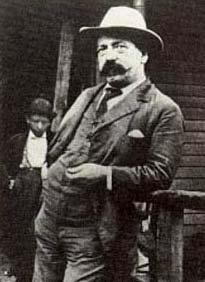Gompers emigrated in 1863 from England to New York City, where he took up his father’s trade of cigar making and in 1872 became a naturalized citizen. His careful leadership of labor interests earned Gompers a reputation for conservatism. In a period when the United States was bitterly hostile to labor organizations, he developed the principles of “voluntarism,” which called for unions to exert coercion by economic actions—that is, through strikes and boycotts.
In 1886 Gompers fostered the separation of the cigar makers and other craft unions from the Knights of Labor to form the AFL, of which he was president from 1886 to 1924 (except for one year, 1895).
He distrusted intellectual reformers, fearing their influence would divert labor’s efforts away from economic goals. To make unionism respectable as a bulwark against radicalism and irresponsible strikes, he encouraged binding written trade agreements and advocated the primacy of national organizations over both local unions and international affiliations.
Gompers kept the AFL politically neutral until pressed by employer tactics, including an open-shop drive, and by federal court injunctions that greatly weakened labor’s economic weapons, such as the strike, picket line, and boycott. The Democratic presidential platform of 1908 included an anti-injunction plank; hence, Gompers supported William Jennings Bryan’s unsuccessful presidential candidacy. Better political conditions for labor would follow: the victory of Woodrow Wilson in 1912 brought the creation of a U.S. cabinet post for labor (1913), followed by the Clayton Antitrust Act (1914) and passage of the Adamson Act (1916), which established the eight-hour workday for interstate railroad workers.
Gompers is noted for having shifted the primary goal of American unionism away from social issues and toward the “bread and butter” issues of wages, benefits, hours, and working conditions, all of which could be negotiated through collective bargaining. Gompers’s AFL became the model of unionism in the United States, achieving economic goals through national trade unions that organized a network of locals and supported them.
Source: Encyclopedia Britannica online
